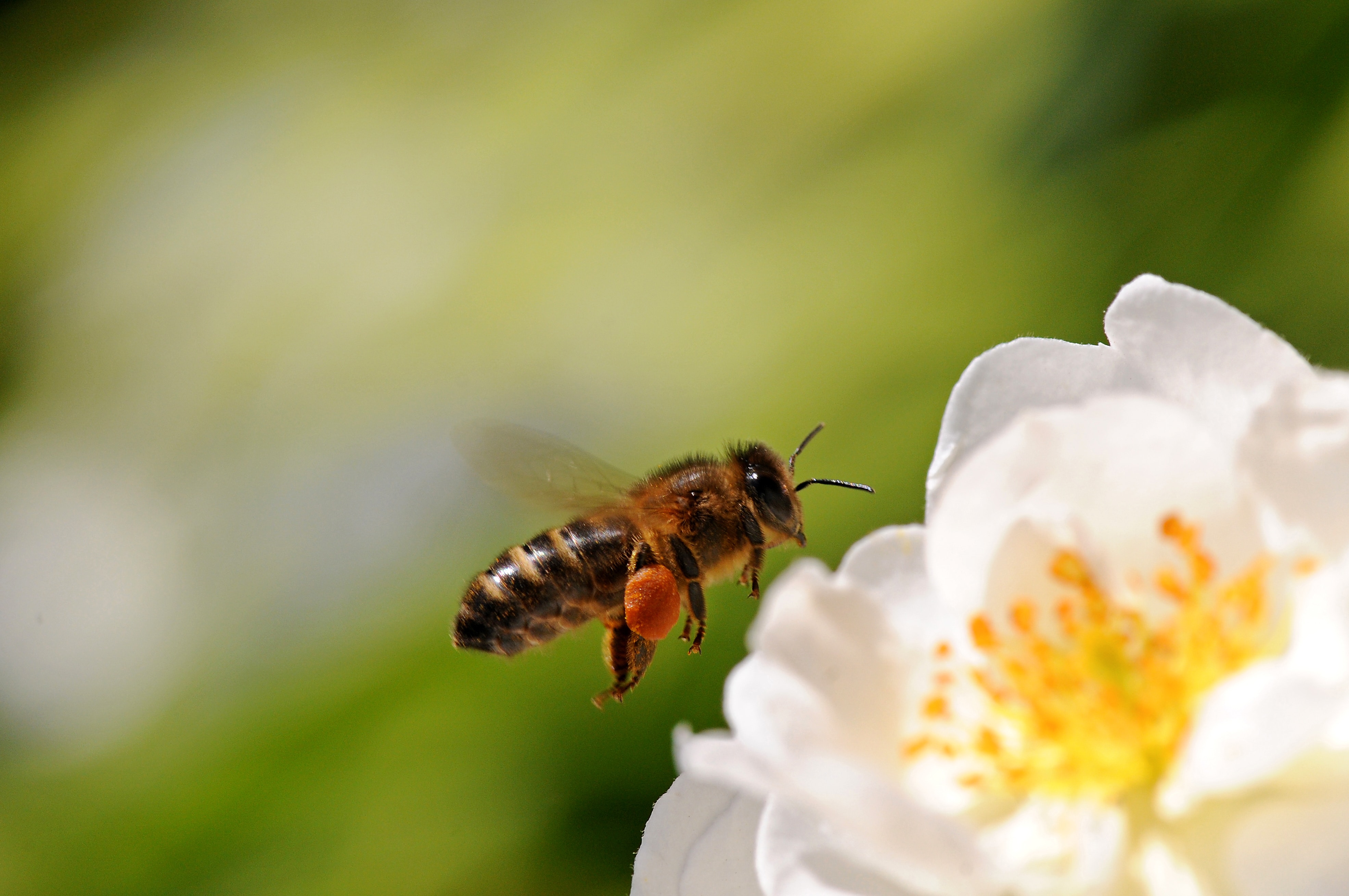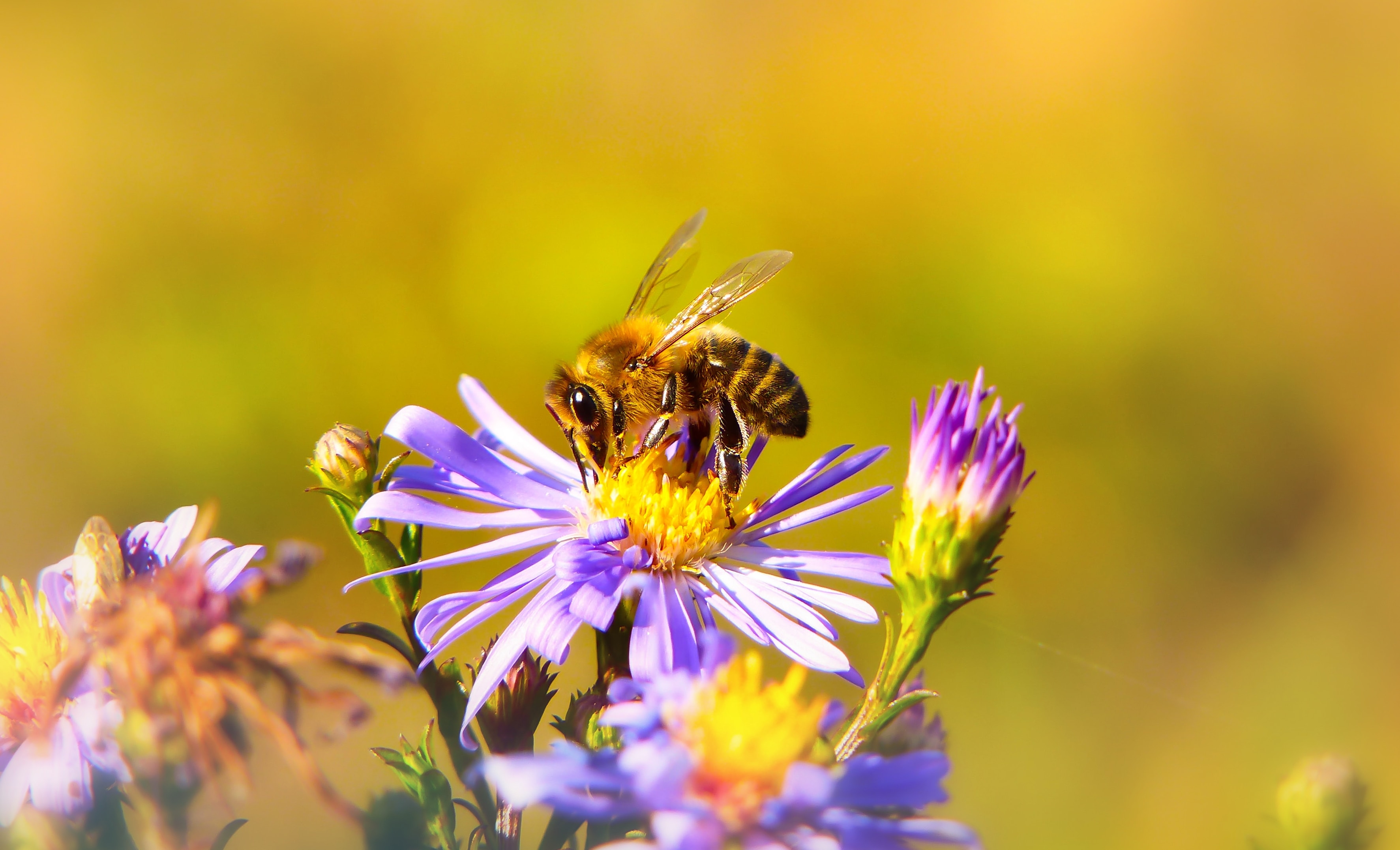Perennials that Attract Bees

Every garden needs pollinators and bees are among the best. Without them there would be few flowers and even fewer fruits and vegetables.
Many people are hesitant to plant areas that are attractive to bees because of the fear of being stung. The truth is, most bees are gentle creatures that are in search of food and water for themselves and their young.
Basic Needs
Bees are looking for two things when they visit flowers:
1. Nectar is loaded with sugars and it a bee’s main source of energy.
2. Pollen provides a balanced diet of proteins and fats.
Bee Gardens
Bee gardens need both good sources of food and places where bees can get water. Because of their small size, bees have trouble drinking from small ponds and bird baths, as they can get caught in the water’s surface tension. Create a drinking area by filling a ceramic saucer with wet sand and sinking it into the ground. Keep the sand wet. Puddling areas like this will attract both bees and butterflies.
You should plant a variety of plants that will bloom throughout the whole growing season.
Patches of foraging habitat can be created in many different locations. Even a small area planted with the right flowers will be beneficial for local bees.
Native plants are usually best for native bees, and can be used in both wild areas and gardens. There are also many garden plants, like varieties of perennials, that are good sources of nectar or pollen. With native plants, it will make a garden attractive to pollinators.
Choose several flower colors, especially blue, purple, violet, white, and yellow, as bees are attracted to these. Plant flowers in clumps rather than scattering them. Clusters of one species attract more pollinators.
Plant different types of flowers that bloom throughout the season and have various shapes to support more bee species. North America has about 3,600 native bee species, each feeding on different flower shapes. Most bees feed on many kinds of plants, so having several flowers blooming at the same time helps them. Plant in sunny, sheltered spots, as bees prefer sun and protection from strong winds.

Plant These Perennials
Achillea (Yarrow)
Arabis
Asclepias (Butterfly Flower)
Aster
Aubrieta (Rock Cress)
Buddleia (Butterfly Bush)
Calamintha (Calamint)
Campsis (Trumpet Vine)
Centaurea (Bachelor Buttons)
Centranthus (Red Valerian)
Chrysanthemum (Shasta Daisy)
Coreopsis (Tickseed)
Dianthus (Pinks)
Echinacea (Coneflower)
Eupatorium (Joe Pye Weed)
Gaillardia (Blanket Flower)
Hemerocallis (Daylily)
Kniphofia (Red Hot Poker)
Lavandula (Lavender)
Liatris (Spike Gayfeather)
Lilium (Oriental Lily)
Lonicera (Honeysuckle)
Lobelia cardinalis (Cardinal Flower)
Monarda (Bee Balm)
Nepeta (Catmint)
Penstemon (Beard Tongue)
Phlox paniculata (Summer Phlox)
Phlox subulata (Mountain Pink)
Polygonum (Silver Lace Vine)
Rudbeckia (Black-eyed Susan)
Salvia (Sage)
Scabiosa (Pincushon Flower)
Sedum
Solidago (Golden Fleece)
Verbena
Veronica (Speedwell)
